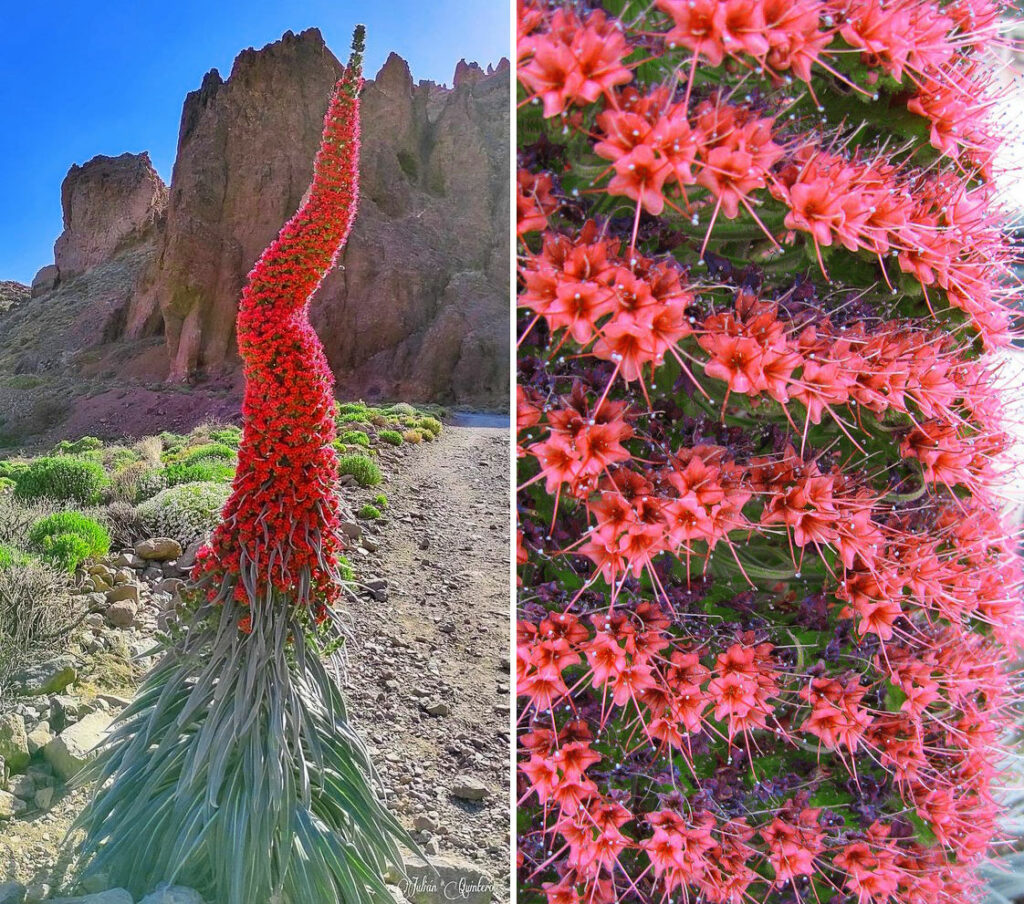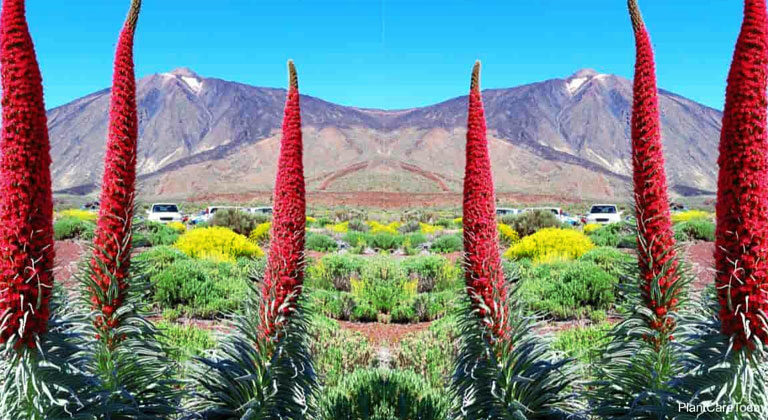If you’ve ever visited the Canary Islands, you might have come across a strikingly beautiful plant with a tall, red inflorescence. This is Echium wildpretii, a species of flowering plant endemic to the islands that has become an icon of the subalpine zone of Mount Teide, Tenerife’s volcanic mountain.
Echium wildpretii is part of the Boraginaceae family, and it’s commonly known by several names such as the tower of jewels, red bugloss, Tenerife bugloss, or Mount Teide bugloss.
It mainly grows in the subalpine zone of the ravines of Mount Teide, where it can experience extreme temperatures, strong winds, and limited water availability. Despite these harsh conditions, Echium wildpretii has adapted to the environment by developing a long taproot that allows it to access deep soil moisture, and by growing hairy leaves that protect it from excessive water loss.
The plant can grow up to 3 meters tall, and its striking inflorescence is a tall and narrow spike of bright red flowers. When the individual flowers are densely packed on the spike, they create a magnificent display that is hard to miss. Apart from its beauty, Echium wildpretii also has ecological importance as it provides an important source of nectar for pollinators such as bees and butterflies.
The plant has become an important part of the subalpine ecosystem of Mount Teide, and it’s a vital component of the island’s biodiversity. However, Echium wildpretii is also a vulnerable species, with its conservation status listed as “vulnerable” due to habitat loss and degradation.
The plant’s popularity as an ornamental plant in gardens and parks worldwide has led to a decline in its natural populations, and it’s crucial to protect this iconic plant to ensure its survival.
In conclusion, Echium wildpretii is a stunning flowering plant that has become an icon of the subalpine zone of Mount Teide, Tenerife’s volcanic mountain. Its striking red inflorescence, adapted to the harsh conditions of the environment, has made it an important part of the island’s biodiversity and an important source of nectar for pollinators.
However, its conservation status is vulnerable due to habitat loss and degradation, making it crucial to protect this plant for future generations to enjoy.


